Biograd na Moru as a (not so) Alternative Destination
August 2, 2022 – Don’t fancy the crowds of Split or Dubrovnik? Finding accommodation on the islands has become a bit complicated? Don’t worry, we’ll sort you out with an underdog, Biograd na Moru.
The national media are beaming with pride reporting record overnight stays, music festivals are back in full force, and the motorways are finally paying off again. Croatian tourism is where we all hoped it would be. In fact, we’re running out of space with the most popular destinations including the famous cities, Istrian villages, and the islands of Dalmatia. It’s time to start looking for alternatives. We tried telling you to go see Lika and Gorski Kotar, Slavonija and Baranja, but we do understand the desire to stay close to the sea. This is why today we will share a little gem that has got it all. Welcome to Biograd na Moru, famous among Croatians and Czechs, but still waiting to be fully discovered.
The little town of some 6000 residents is located only 30 km south of Zadar and about 50 km north of Šibenik, or 130 km from Split. It is nestled between two bays and overlooks the most indented part of the Adriatic coast. Surrounded by national parks and nature parks, it boasts plenty of tourist and recreational facilities but keeps a calm, homely atmosphere even in the height of summer. Get to know this charming little place through our top list of activities in Biograd na Moru. Here are some of our favourites that we suggest you try this summer:
Beach Hop
Whether you are the type to go for an early morning run and swim, like to chill all day or go late night dipping, you will find a spot that suits your needs. With the most famous ones being Bošana, Dražica, and Soline, Biograd offers a variety of terrain and conditions on its beaches. They range from pebbles and rocks, an open swimming pool for training, to a sandy beach perfect for the little ones. There is plenty of space both in the sun and in the shade. For perfect comfort, we suggest renting a lounge and/or an umbrella. As for sustenance and entertainment, you can find pretty much anything there. The little stands include everything from bakeries, fast food and ice cream to fresh fruit and salads. As for the little ones, there are water slides, aqua parks, playgrounds and attractions such as VR.
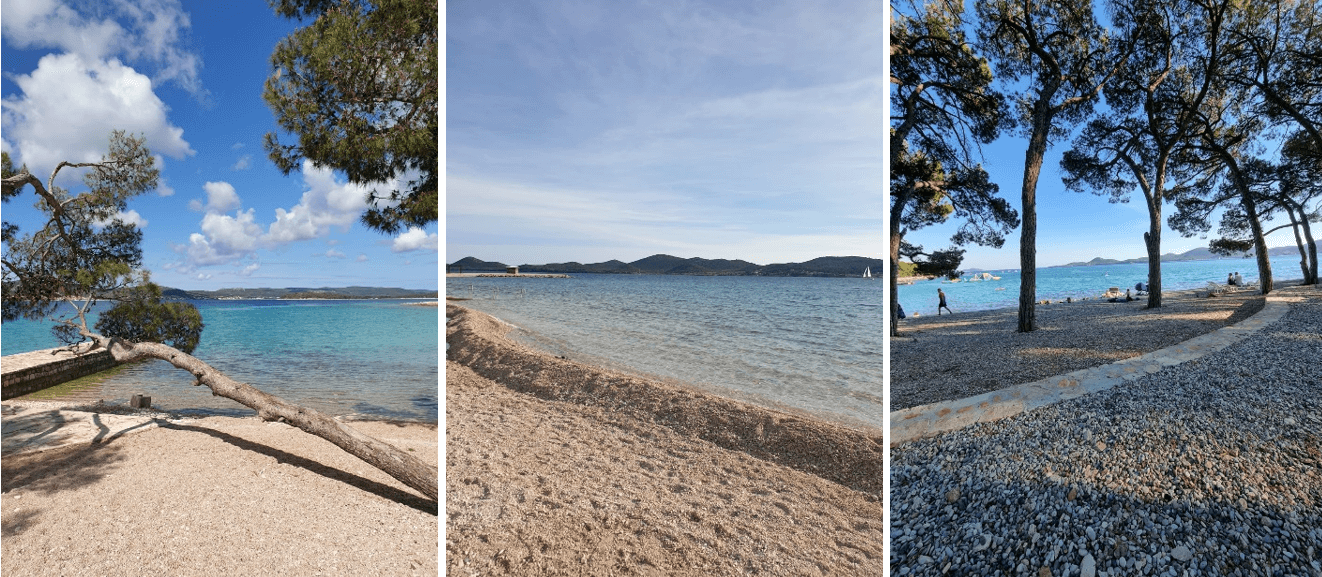
Early morning at the beaches of Biograd. Photos by Author
Chase Sunsets
Thanks to the neighbouring islands being so dense and so close to Biograd, a sunset will look different depending on where you stand. If you plan it just right, you could have it so that you can still see the sun nesting between the islands from one point when it’s not visible from another point just a few hundred metres down. Whether you want to see it reflecting in the sea, disappearing behind Pašman, or glistening through the trees, one thing is always true – every sunset is more beautiful than the previous.

Photos by Author
Count the Islands
The big ones, the one with the lighthouse, the heart-shaped island… Ugljan, Pašman, Dugi Otok, Sv. Katarina, and Galešnjak can all be seen from Biograd or places nearby. Hop on a ferry and visit some of them, or try counting and naming them while having your afternoon swim, we promise it’s fun both ways!
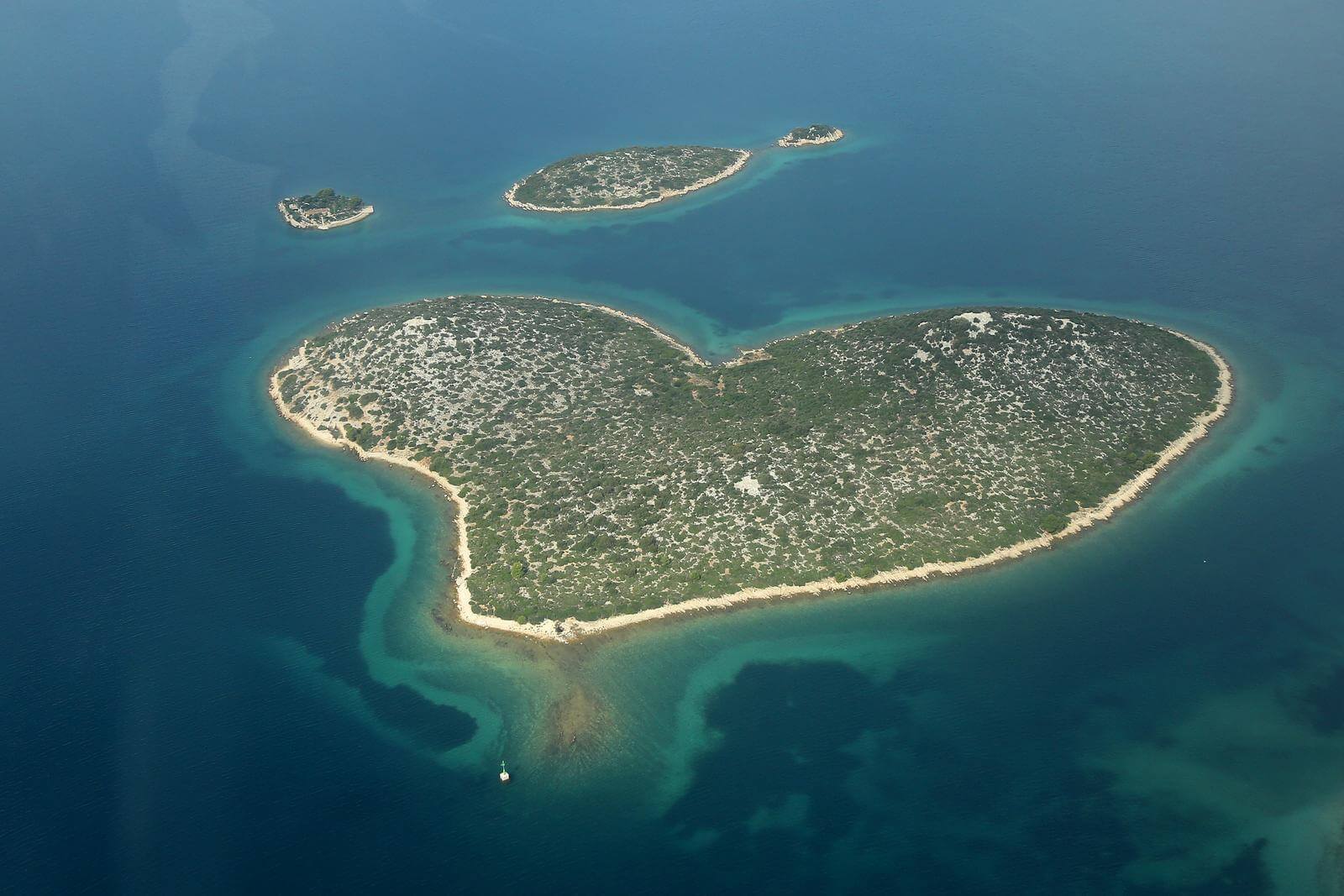
Galešnjak Island, photo by PIXSELL (Filip Brala)
Eat and Drink
With pubs and restaurants densely populating the entire stretch of the beach, as well as the city centre, we challenge you to stay hungry or thirsty in Biograd! Start with brunch at the beach, have your afternoon iced coffee in the shade of one of the beach bars, go about your evening enjoying some fresh local seafood followed by Italian-inspired gelato, and of course, round it all up with a cocktail or two right by the sea. If you prefer cooking at home, get up early to catch the local fishermen coming back from their nightly catch and buy some of the best fish directly from them, or visit the local market for more fresh produce. As for edible souvenirs, you can never go wrong with some dried figs and olive oil which are produced in something like every other house. If you notice fruit or olives in backyards, try knocking on their doors and finding out if you can buy some to take home. Chances are, it won’t take more than a few knocks to declare mission success.
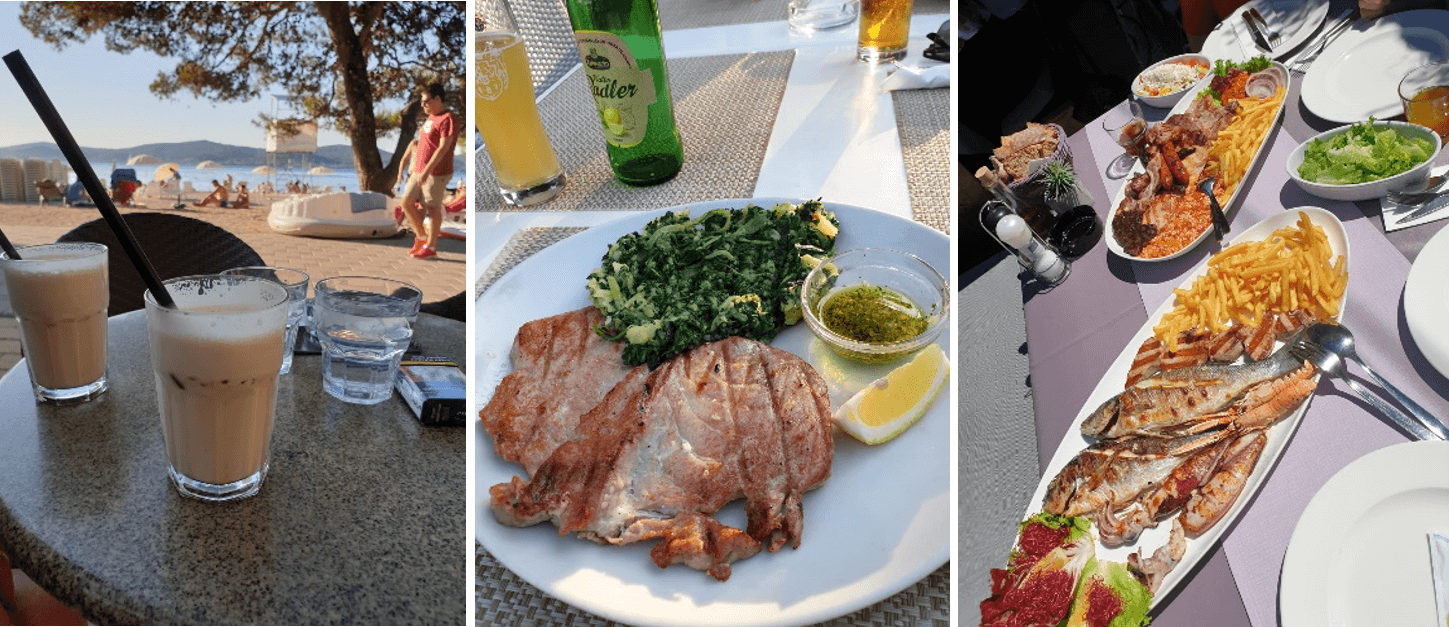

Photos by Author
Get Some Movement In
After you’ve eaten and fed your entire family, never go swimming! Embrace the healthy Dalmatian ways and chill in the shade for a bit until it all settles down. Only after a little nap under the pines will you be ready to move. The 4 km stretch by the sea should be enough for recreational joggers, and if you get up early you will be rewarded by the sun rising above the pines in the most charming of ways. If you prefer running long distances or cycling, we suggest heading out of Biograd, and following the Adriatic Highway towards Zadar for some truly breathtaking views. With most of it being covered with cycling paths, it is suitable for all kinds of activity. It will take you through a few charming little villages, but its true beauty lies in the fact that for the most part, it passes right by the sea and provides perfect little private swimming spots.

Photo by Adventure Park Biograd
Go on an Adventure
If swimming, running or cycling doesn’t cut it for you, and you need a little bit of adrenaline to spice up your day, try one of the activities at the beach, in the forests, or nearby. Our favourite beach activities include parasailing and jet skiing, followed by renting a SUP and exploring the bays. If you’re looking to entertain the whole family, you can also rent a paddle boat and try sliding down into the open sea. Needless to say, always make sure the weather conditions are right and listen to the advice of experts to stay safe! For those who aren’t afraid of heights, check out Adventure Park Biograd and test your climbing, hanging and ziplining skills, or head out for a day of rides in Fun Park Mirnovec.
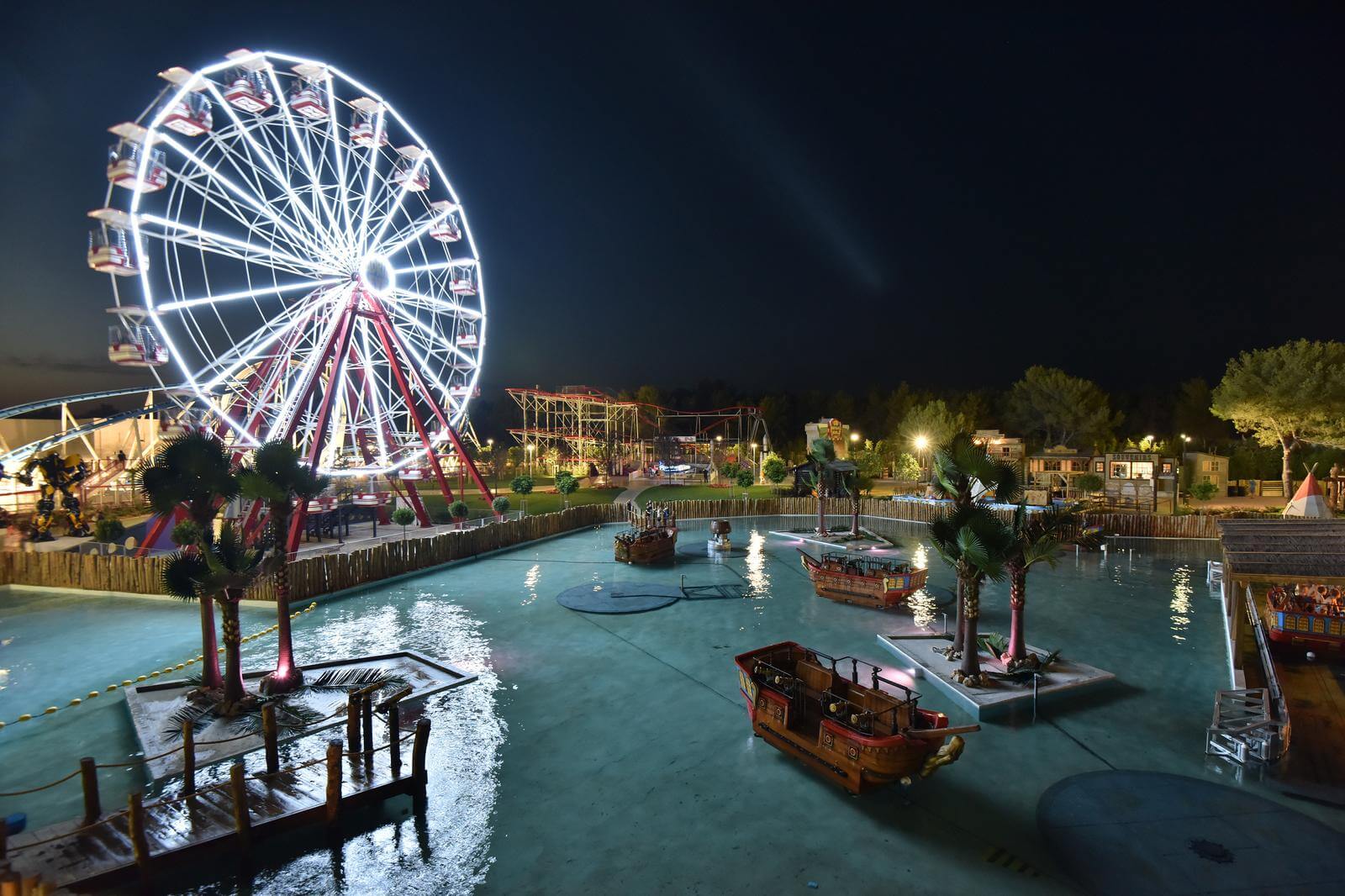
Photo by PIXSELL (Dino Stanin)
Discover Vransko Jezero
Tired of the beach, had too much ice cream, or maybe the sea is too salty? Head out to Lake Vrana, a nature park just a short drive from Biograd, which is also the largest lake in Croatia. With an area of 30.2 km2, it makes up its own ecosystem, with interesting flora and fauna. It is filled with brackish water and is home to many species of fish and birds. The area of the park also encompasses a few localities dating as far back as the 9th century. Even if you’re only out for a day of birdwatching and walking, there is plenty to see. If you’re looking for a more active visit, try renting a bicycle or a kayak, or hike to one of the viewpoints to see the Kornati National Park from above.

Photos by PIXSELL (Hrvoje Jelavic and Dusko Jaramaz)
For more, check out our lifestyle section.
Omiš in Autumn, the Perfect Time to Visit Mountains, the Cetina and the Sea
October 15, 2021 – With local seafood currently at its best and cooler temperatures inviting runners, hikers and cyclists to this spectacular location, Omiš in autumn is one of the best destinations of the season.
When temperatures cool on the Croatian coast, the telltale signs of tourism start to fade. Villages that were full of people in summer become very still. Only in the larger places does life go on unaffected.
The seaside city of Omiš is one such place. The charming Omiš Old Town streets hold their special atmosphere throughout the year. Autumn, in particular, is a favourite time for visitors to come.
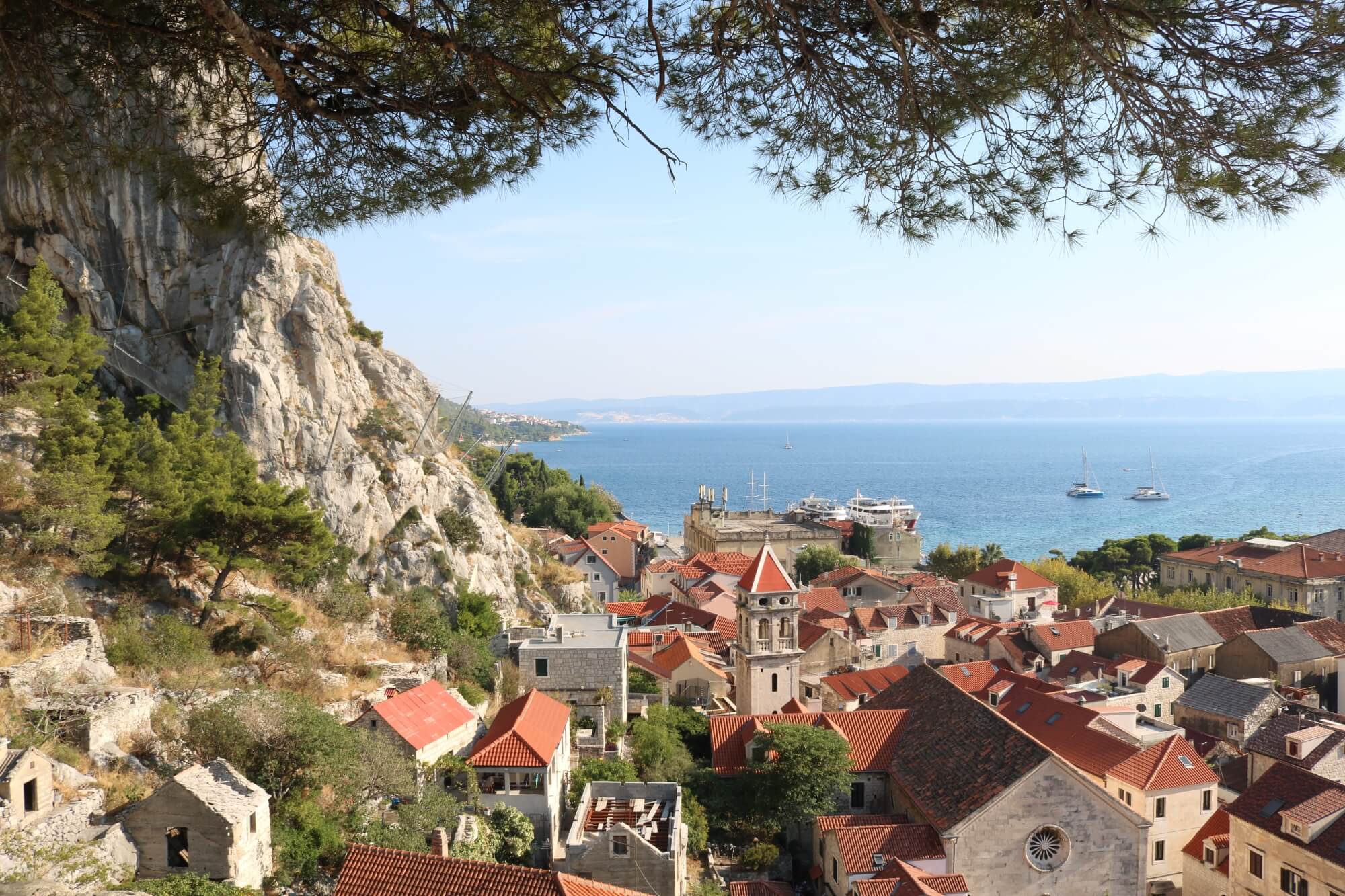
Arguably, this is the time of year when Omiš's famous and distinct cuisine is at its best. Omiš's special bounty of seafood comes from its position on the Cetina river. The best-tasting Mediterranean fish and shellfish love these conditions, where the freshwater meets the saltwater. And, in autumn, the prawns, scampi and calamari are at their biggest and best. The restaurants of Omiš offer fresh, seasonal specialties every day. Their tables are taken by relaxed visitors from all over the region, drawn to the city now the summertime rush has subsided.
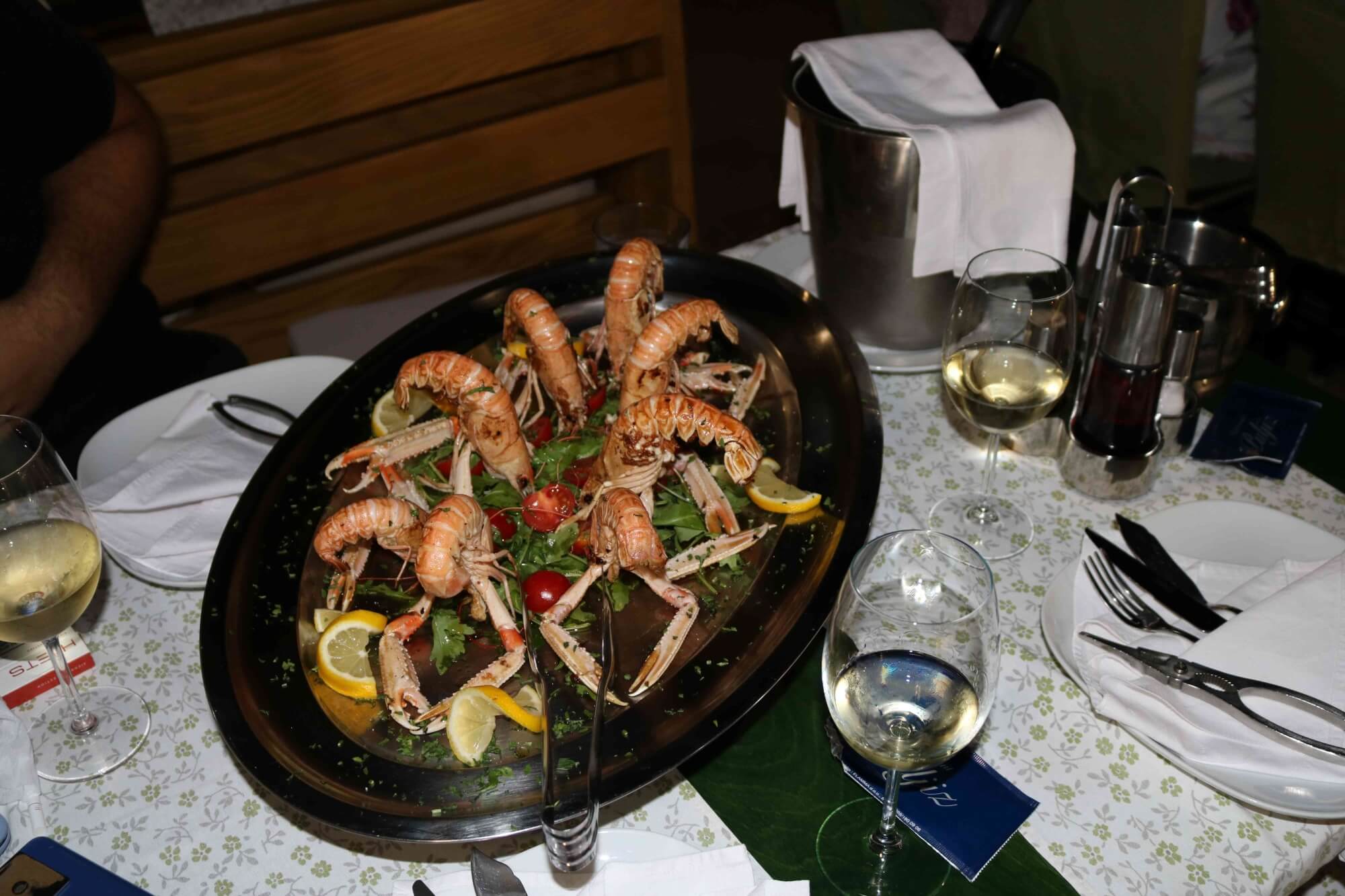 Seafood is an autumn specialty at sister Omiš restaurants Puljiz and Bastion. © Marc Rowlands
Seafood is an autumn specialty at sister Omiš restaurants Puljiz and Bastion. © Marc Rowlands
But, in the hills above and behind Omiš, and along the long promenades of the Omiš riviera, different kinds of visitors can be found. The cooler temperatures of autumn are perfect for cycling, running, hiking and walking.
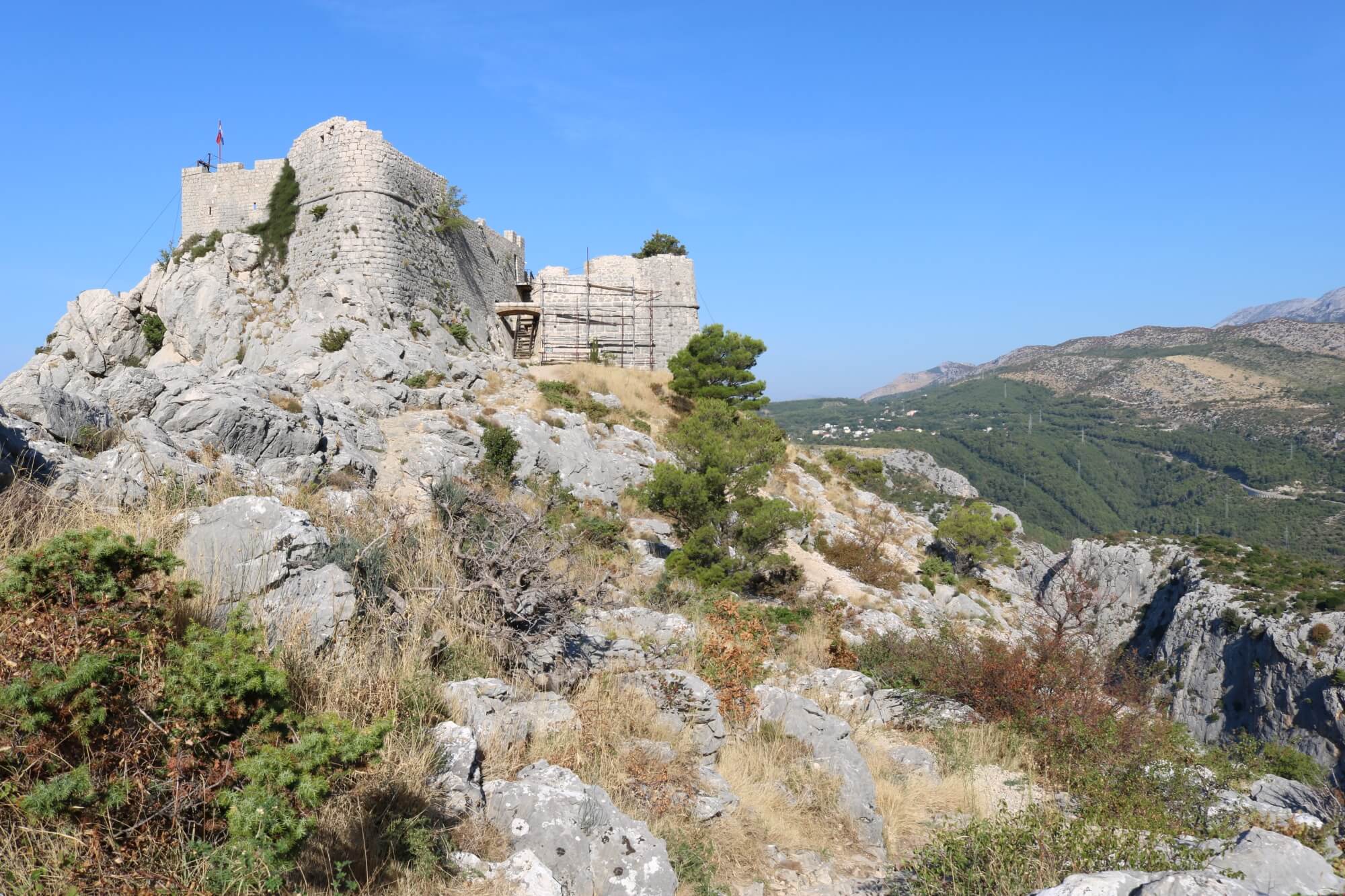
Sitting 262 metres above the city, the 15th century Starigrad Fortress is a mildly challenging hike. But, even older children can easily manage it. And the views from the top are incredibly rewarding. Autumn's cooling winds blow along the water surface, cleaning the vista. You can see so much detail on the islands opposite Omiš when the air quality is like this.
For those who prefer sport and recreation of a different kind, autumn in Omiš holds four of the city's most eagerly anticipated challenges
Omiš in Autumn: Dalmatia Ultra Trail
 Omiš in Autumn © Dalmatia Ultra Trail
Omiš in Autumn © Dalmatia Ultra Trail
With between 60% and 80% of its entrants coming from overseas, Dalmatia Ultra Trail is among the most internationally famous of all Croatia's cross country runs. And for good reason. The scenery is spectacular. There are three route options, allowing the race to be accessible to runners of varying abilities.
Mountain Dut
Starting from the Roman town of Solin, just north of Split, Mountain Dut is the biggest challenge of this Dalmatia Ultra Trail. On a course with a total distance of 122 km, runners will ascend to Putalj and Klis, site of the famous fortress, crossing along the Dinaric Alps before dropping down to Gata in the Omiš hinterland. From there, they drop down into the spectacular Cetina river valley and run parallel to the river until Kostanje.
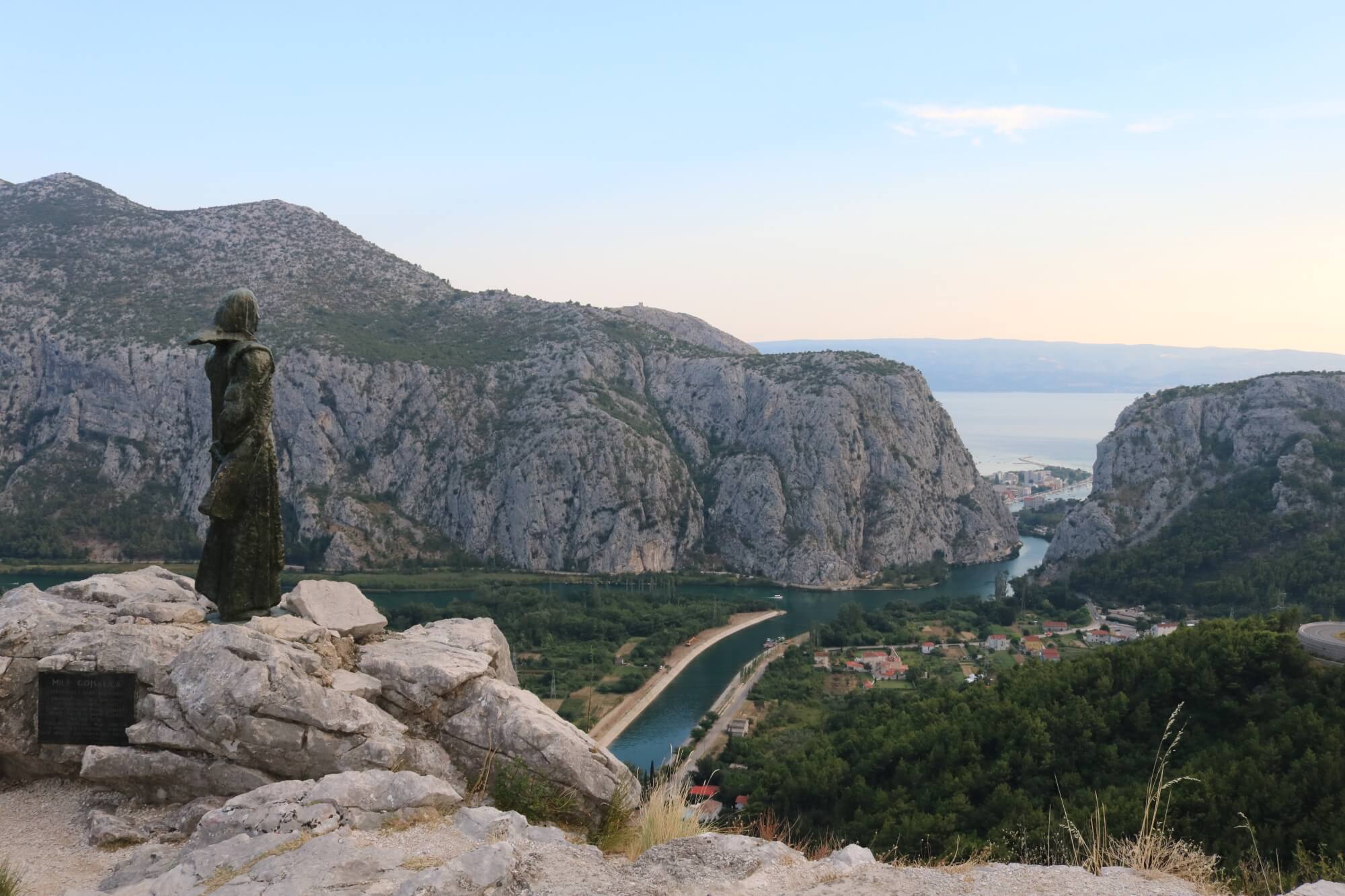
Returning up into the hills to visit the traditional village of Zadvarje, the trail next takes runners down to beautiful Brela. Runners will pass by beautiful Brela beaches, then those of the Omiš riviera villages Pisak, Marušići, Mimice and Medići. Then, it's back up to the final stretch of hills, visiting the old village of Lokva Rogoznica on the way, before finally descending to Omiš.
Mountain Dut 2021 starts on Friday 15th October at 9pm from Solin. Trail runners have 32 hours to complete the course. Each finisher will be awarded with 5 ITRA qualification points.
 Omiš in Autumn © Dalmatia Ultra Trail
Omiš in Autumn © Dalmatia Ultra Trail
Sea Dut
At 56km in length, Sea Dut offers a challenging trail set before the entire Makarska and Omiš riviera coastline. Starting in Makarska, runners rise up to the village of Kotišina, famous for its botanical gardens and castle. Thereafter, they ascend Biokovo mountain, the trail reaching almost 875 metres above sea level. They stay atop the hills all the way to Brela, where they drop down to the beach. Thereafter, they take the same course as Mountain Dut, past Pisak, Marušići, Mimice and Medići, up to Lokva Rogoznica, then down to Omiš.
Sea Dut 2021 starts on Saturday 16th October at 8am from Makarska. Trail runners have 15 hours to complete the course. Each finisher will be awarded with 3 ITRA qualification points.
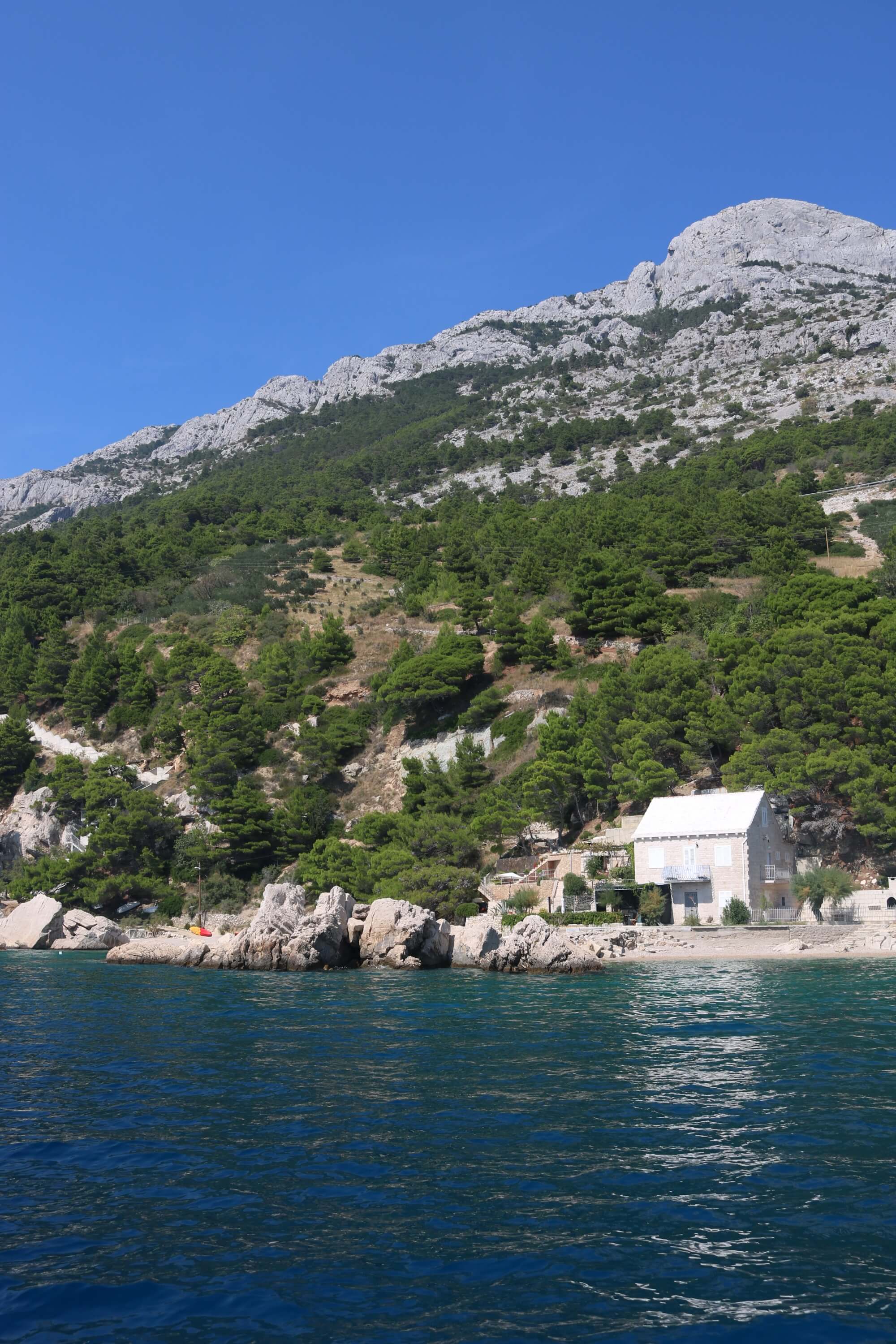
Ethno Dut
With a total distance of 18km, Ethno Dut is the most accessible of the Dalmatia Ultra Trails here. Starting in Dugi Rat, runners make a moderate ascent into the hills of just under 400 metres above sea level. They maintain roughly the same altitude for the entire trail, passing Jesenice and Tugare, before dropping down into Omiš.
Ethno Dut 2021 starts on Saturday 16th October at 1pm from Dugi Rat. Trail runners have 5 hours to complete the course. Each finisher will be awarded with 1 ITRA qualification point.
Omiš in Autumn: Omiš Half Marathon
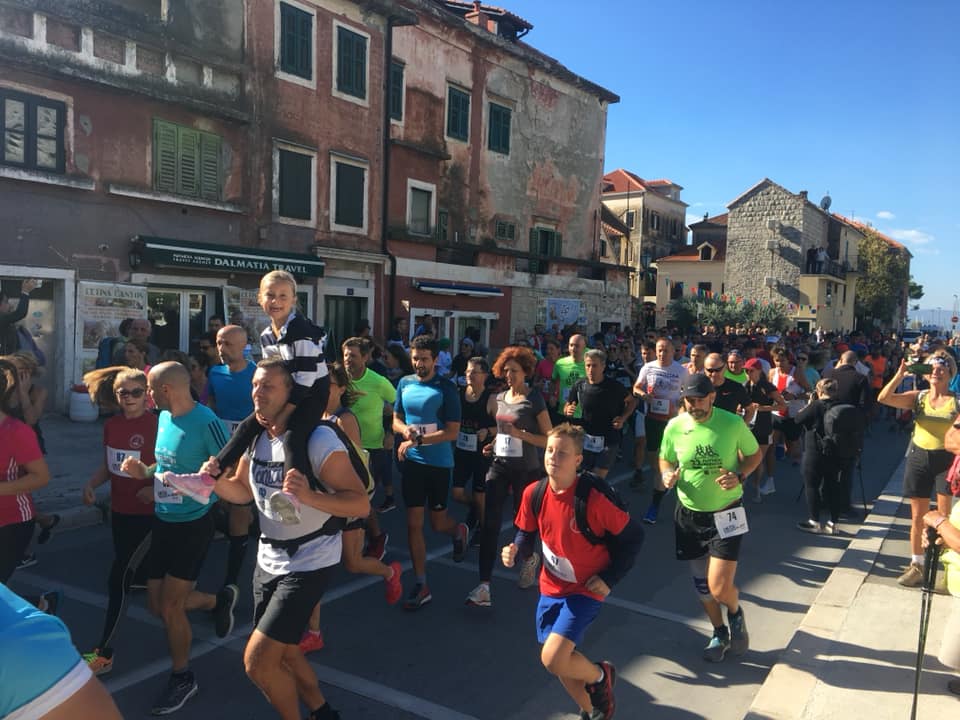 Omiš in Autumn © Omiš Half Marathon
Omiš in Autumn © Omiš Half Marathon
With a backdrop of mountains and the Cetina river, the half marathon in Omiš is perhaps Croatia's most spectacular. Where else can you run a virtually flat course with such scenery accompanying you?
Of course, the striking route is facilitated by following the Cetina river canyon. When doing so, runners pass some of the best rafting, kayaking, trekking, hiking and free-climbing locations in Croatia.
In 2021, the event again has two races - the half marathon and a recreational 6 kilometre race. Both take place within the Cetina river canyon.
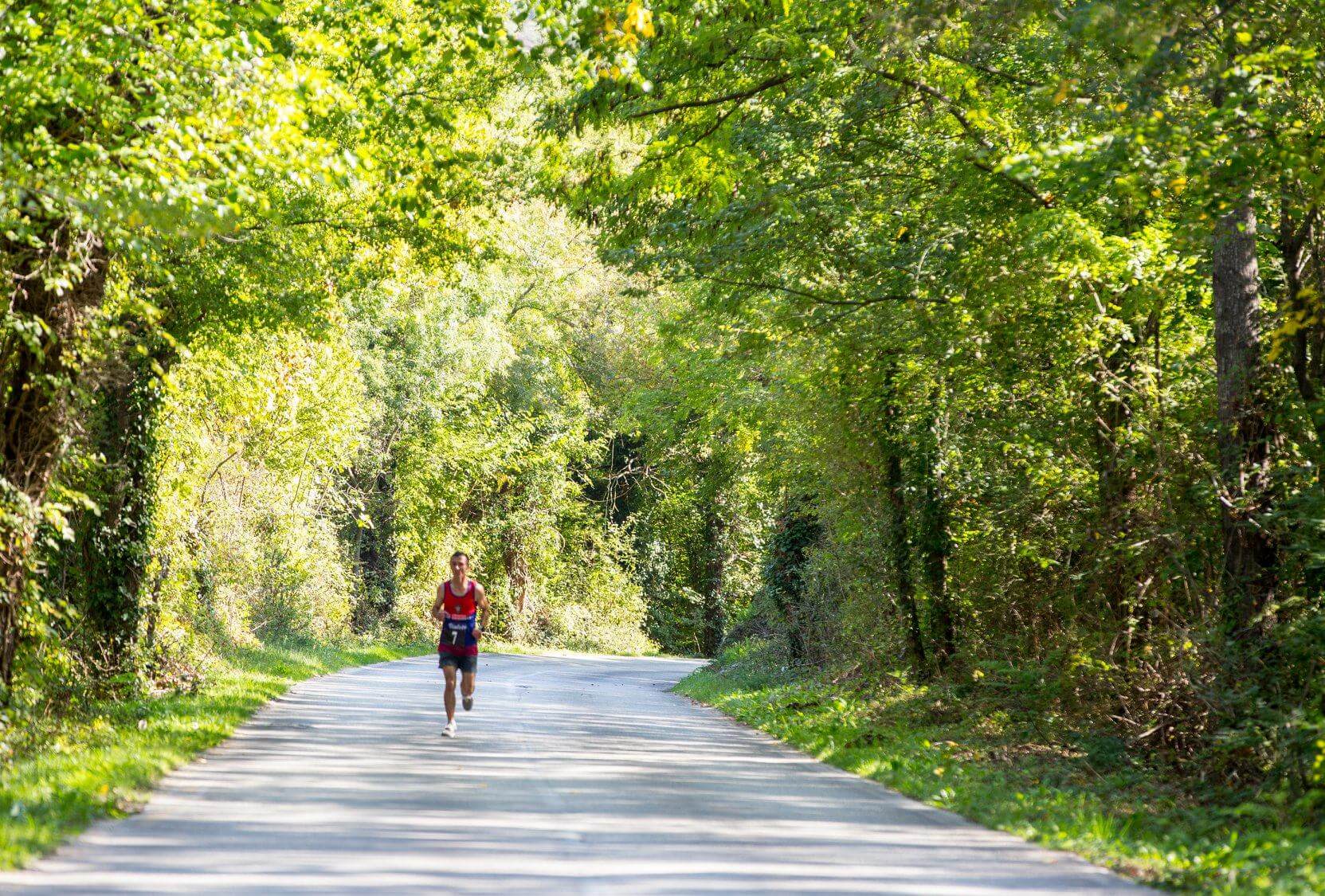 © Omiš Half Marathon
© Omiš Half Marathon
The Omiš Half Marathon takes place on Saturday 23rd October 2021.
You can register here and entries will be accepted in person between 8 am - 9 am on the day of the race. For more details, check the event's Facebook page.
UEFA Futsal Champions League 2021
 Zeleno Plavi © MNK Olmissum
Zeleno Plavi © MNK Olmissum
With the tournament celebrating its 20th anniversary in 2021, there's no better time for the Fifa accredited UEFA Futsal Champions League to be coming to Omiš. Better still, the hometown Futsal team, MNK Olmissum are the current national champions. They won both the cup and the league in the 2020/2021 season!
 Champions! © MNK Olmissum
Champions! © MNK Olmissum
It's been two decades since a Croatian team reached the semi-finals of the tournament. Currently, MNK Olmissum are ranked within the top 16 of all European futsal clubs. To proceed in the competition, the hometown heroes will have to come top of their group. They face opponents Leo (Armenia), Diamant Linz (Austria) and KMF FON (Serbia). They will host the group at their home ground of Ribnjak, Omiš between October 26 and 31. The matches will be televised, but what better way to enjoy than in-person?
Omiš in Autumn: Dalmatian Trail League - Mosor Grebbening
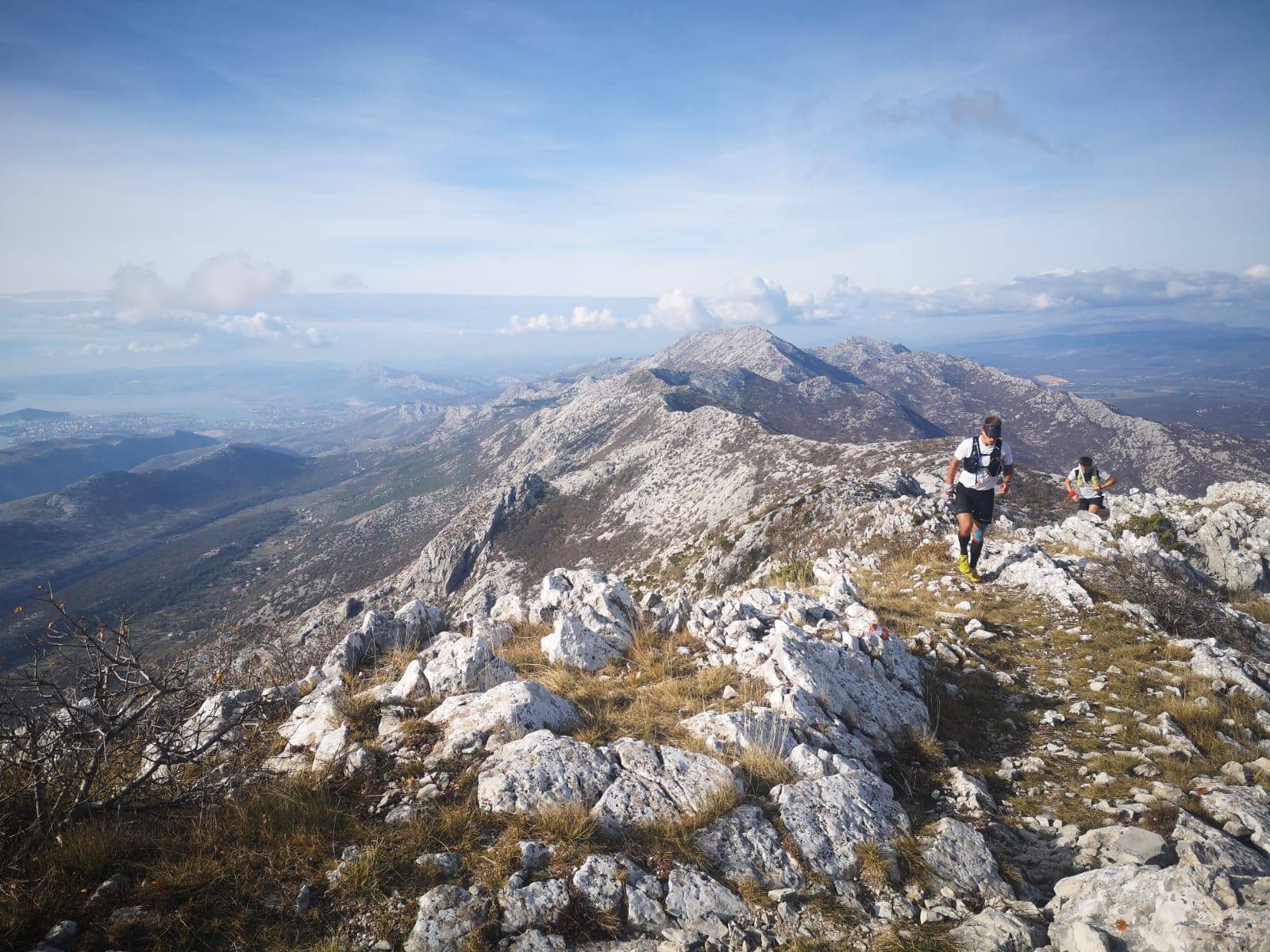 © Marko Herman
© Marko Herman
The spectacular section of the Dinaric Alps that lies to the west of Omiš is known as Mosor. It starts near Klis, above Split, and runs to the Cetina river. Mosor Grebbening is a series of trail runs through this epic mountain terrain. In 2021, it is the 9th round of the famous Dalmatian Trail League.
The event contains a choice of three adult trails and one children's race. All of the races start or end in the village of Gata, in the Omiš hinterland.
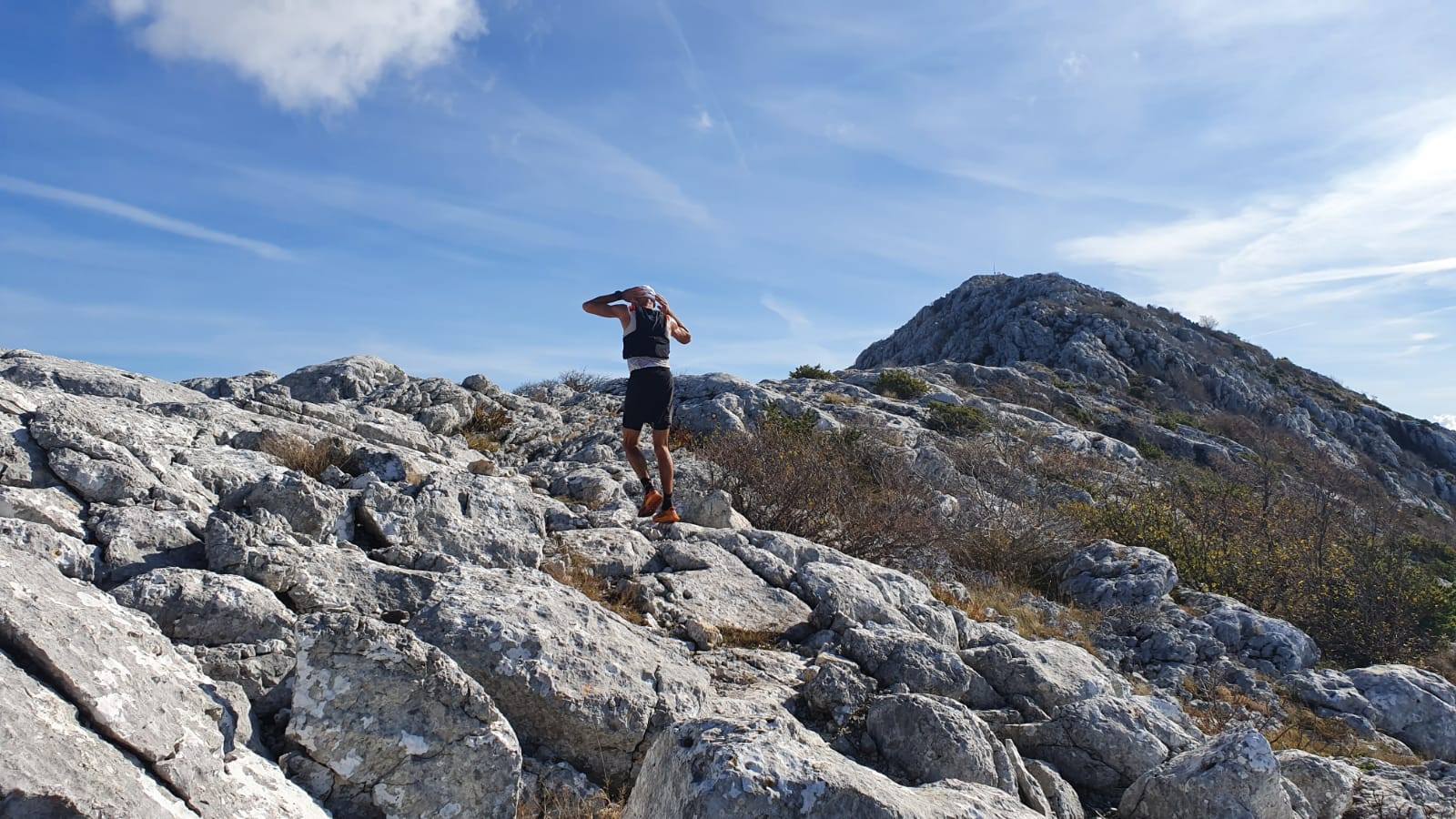 © Ivo Pešić
© Ivo Pešić
Starting in Klis and finishing in Gata, Sivonja is the toughest trail. It is 37.50km in length and has a 2590m ascent. Runners have 12 hours to complete the course.
Still a tough ask, Tovar is the slightly easier choice. At 17km and with an ascent of 1270m, you're given 8 hours to complete the trail.
At 8 kilometres in length and with a 400 metre ascent, Pule is the most accessible race. It should take way less than the 4 hours allocated. The children's race is an 800 metre dash around Gata.
 © Marko Herman
© Marko Herman
Mosor Grebbening takes place on Saturday 13 November 2021.
Registration for the races: exclusively via the online registration form here.
Dalmatian Bacon Joins Prosciutto With European Protection
February 16, 2021 – Pršut tends to hog the limelight when people discuss Croatia's mastery of preserving pig, but prosciutto is far from the whole story. Croatian bacon is the best bacon in the world! Having now attained EU-protection, Dalmatian bacon looks set to rightly become the next most famous export of traditional pork produce from the region.
If you've visited Croatia – perhaps, even if you haven't – you'll have tried or at least heard of its famous prosciutto. Known locally as pršut, this dry-cured ham is a renowned delicacy. Taking pride of place at every public buffet, it is served thinly sliced, usually uncooked and savoured simply alongside bread, cheese, wine and olives. It is enthusiastically imported from Croatia across Europe and no less than four Croatian prosciutti from different regions are protected at an EU-level. But, pršut is not the be-all and end-all of Croatia's mastery with preserving pig.
As well as famous sausages like Kulen, kobasica and krvavica, Croatia is also brilliant at making bacon. That's no overstatement. They are not just good at it – Croatian bacon may be the finest you will ever try.
The best bacon made in the country usually come from Dalmatia and Slavonia and is, like Dalmatian prosciutto, smoked. Though Dalmatian bacon may stand slightly in the shadows of the region's more delicate pršut, this more robust and flavoursome product is featured within a greater wealth of traditional, cooked dishes and praised by anyone who tries it.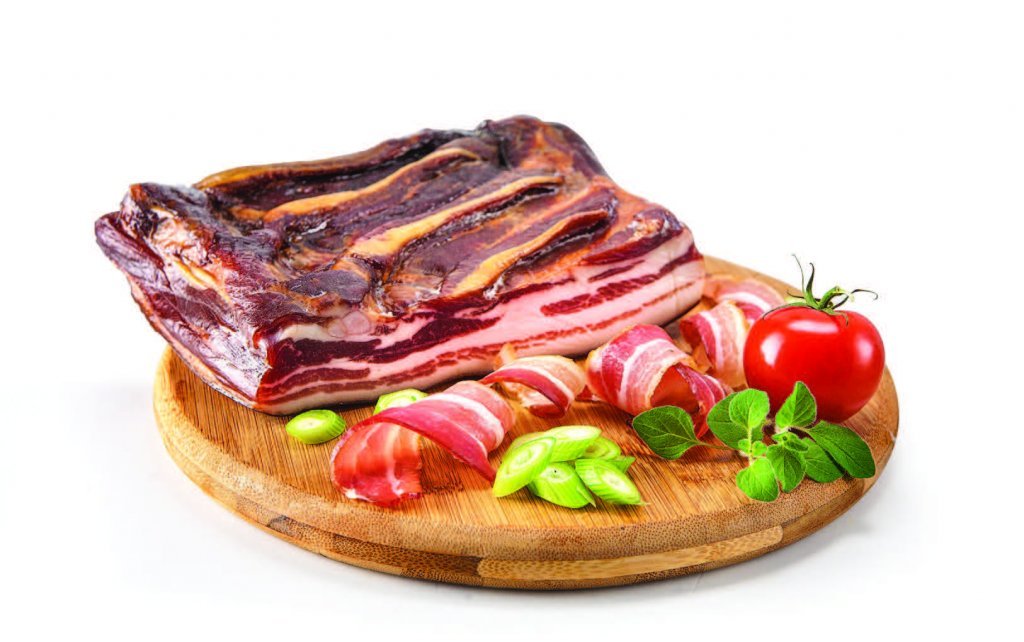 Dalmatian panceta © Gavrilovic
Dalmatian panceta © Gavrilovic
However, the secret of Dalmatian bacon may soon be let out of the bag. This traditionally made product has received the same EU-protection as Dalmatian prosciutto. Sometimes called slanina or panceta (even though, in Italy, the title of pancetta is usually reserved for bacon which is not smoked), Dalmatian bacon was protected at a national level in 2019, the first steps required in order for it to apply for a similar classification within the EU. Confirmation of its EU-awarded protection was announced by the Croatian Agriculture Ministry on Tuesday 16 February 2021
Dalmatian bacon is salted by hand, pressed and smoked. Unlike bacon available in other countries, Dalmatian bacon is only ever that which is elsewhere called 'streaky' bacon, as opposed to 'back bacon'. It is made from pork belly and chest. It has belts of whitish fat running along its length, which carry a substantial amount of flavour. Its traditional salting and smoking process are so thorough that it can be eaten raw, uncooked and is regularly enjoyed in this way.
Dalmatian bacon is aided in its preservation by low winter air temperatures and in its drying by seasonal winds.
Six of the Best! Croatian Protected Produce On Sale in China
September 18, 2020 – Six items of Croatian protected produce are among the 100 European items to go on sale in China
Six items of Croatian protected produce are among the 100 European items to go on sale in China. In a reciprocal deal, 100 Chinese products will also be recognised and recommended on the European market.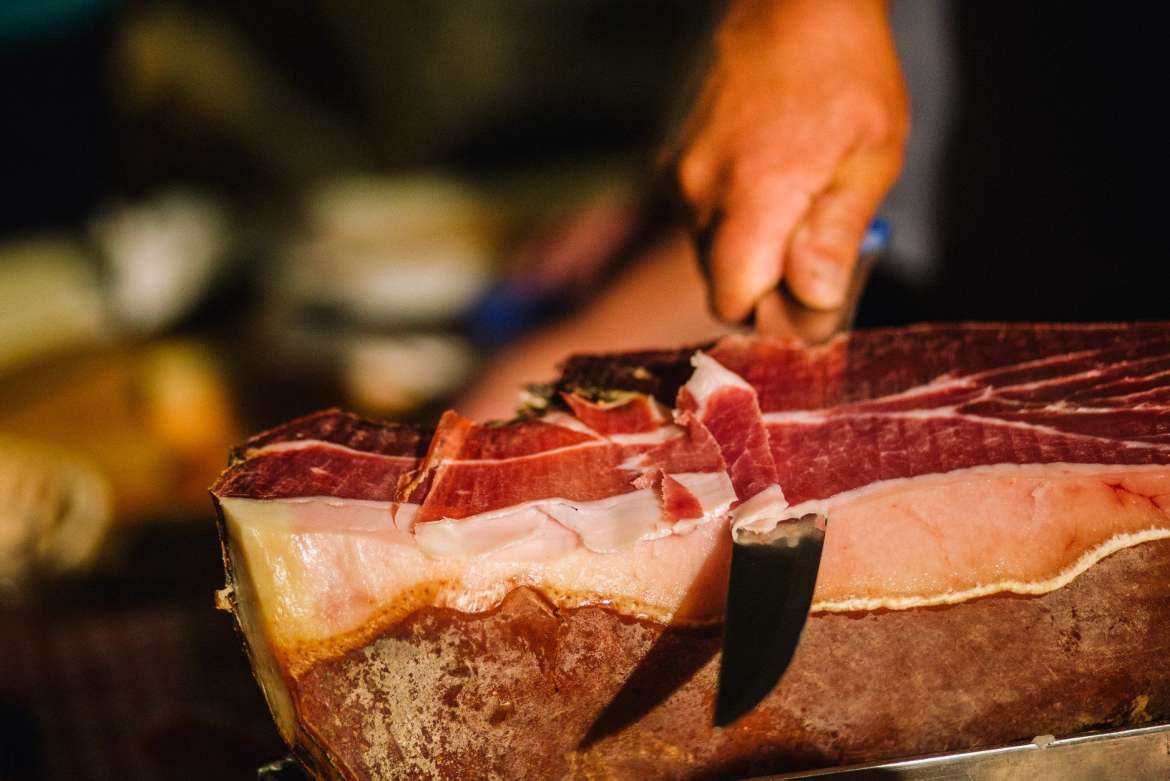 Dalmatian prosciutto © TZ Vrgorac
Dalmatian prosciutto © TZ Vrgorac
Baranja kulen, Dalmatian prosciutto, Drniš prosciutto, Lika potatoes, Dingač wine and Neretva mandarins are the premium six Croatian protected produce chosen to be among the European 100. All of the Croatian protected produce is already recognised at a national and at an EU-level and designated its status based on its unique place of origin.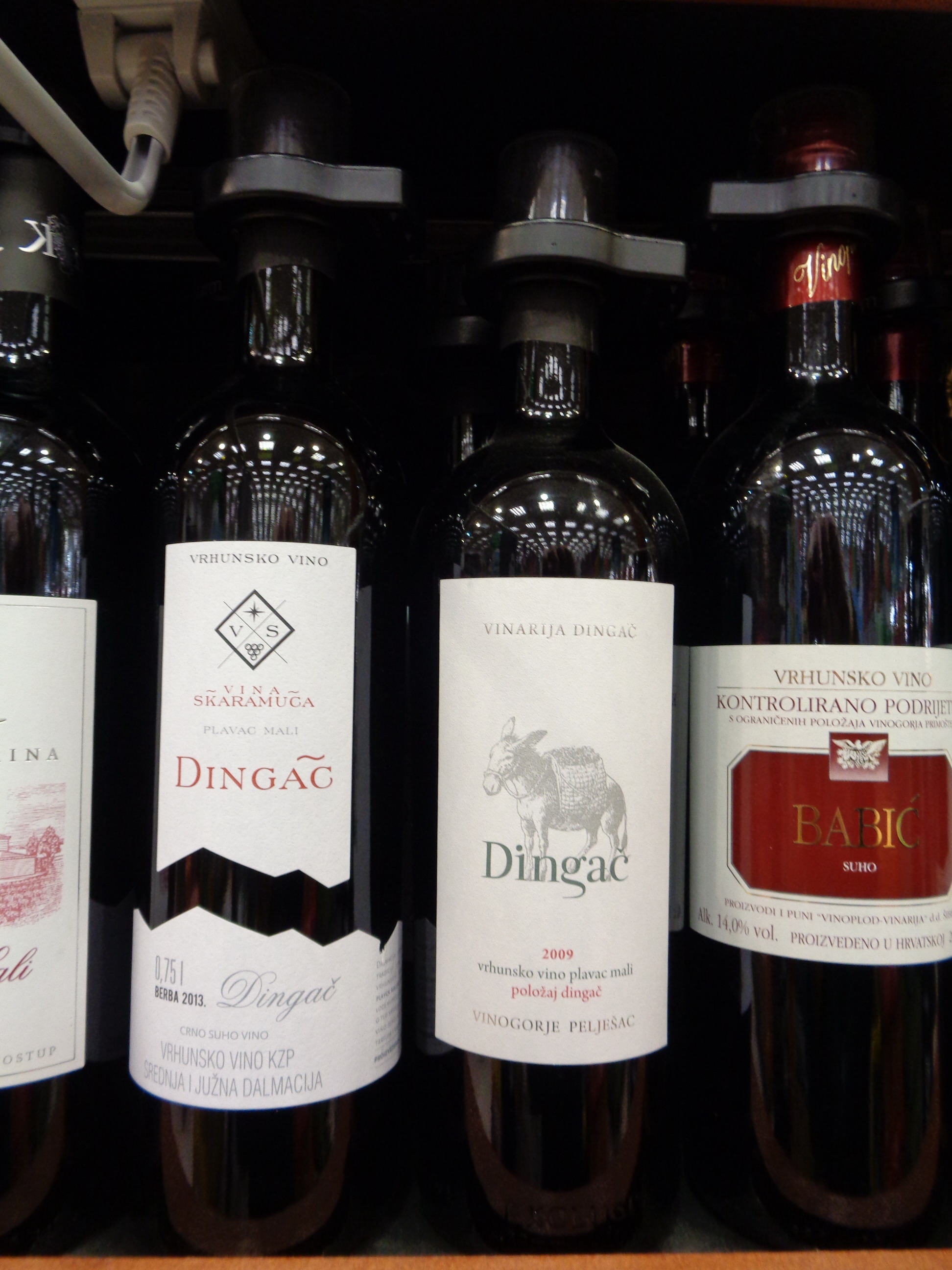 Dingač wine © Silverije
Dingač wine © Silverije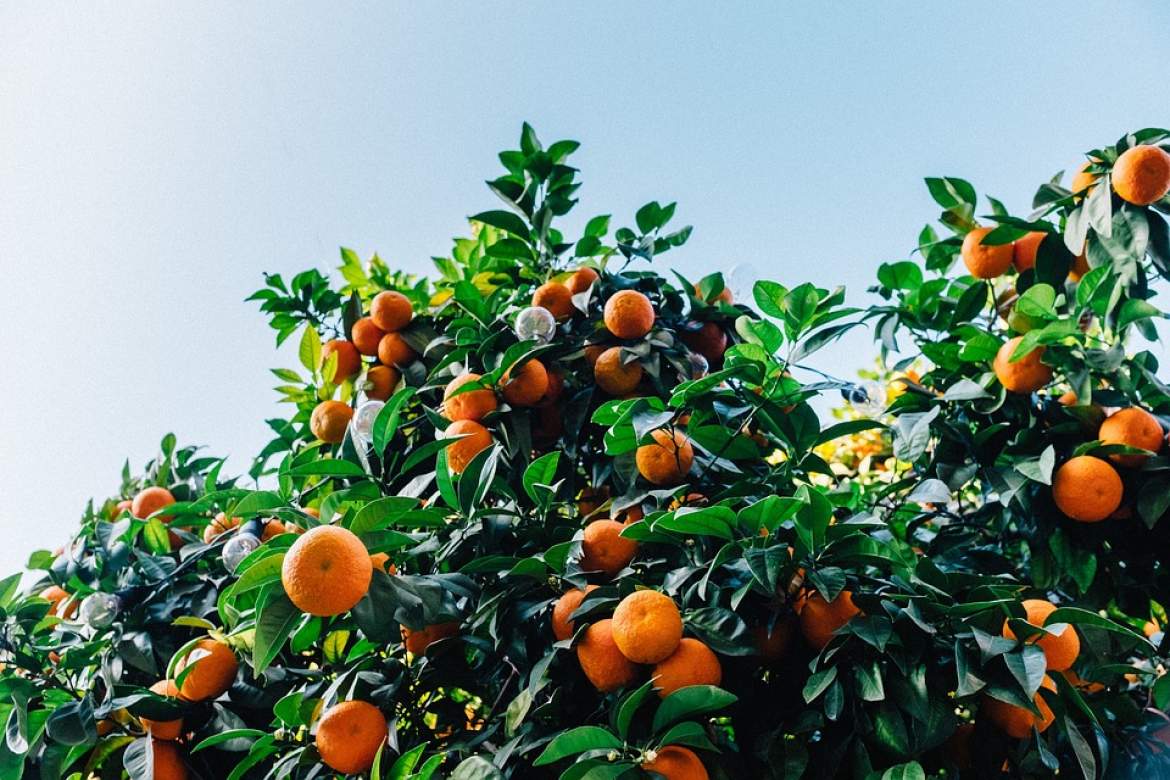 Neretva Mandarins
Neretva Mandarins
The European products will be specially marked and receive special privileges when they go on sale in China. Alongside the Croatian protected produce, other items on the European list are French champagne, Greek feta cheese, Italian Parma prosciutto, Italian mozzarella, Irish whiskey and Portuguese port. On the Chinese list of products are distinct varieties of rice, bean and vegetable products, some of which will already be popular with Europeans who eat or cook Chinese cuisine.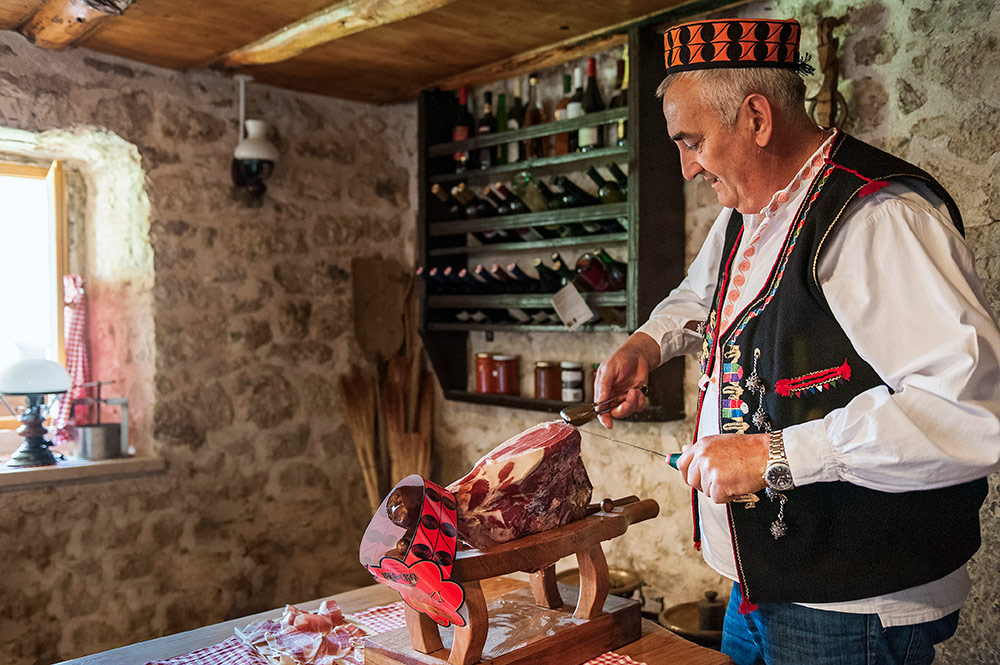 Drniš prosciutto © Tourist Board of Drniš
Drniš prosciutto © Tourist Board of Drniš
The full list of Croatian produce protected at an EU-level currently includes Istrian olive oil, Dalmatian prosciutto, Pag cheese, Lika lamb, Poljički Soparnik, Zagorje turkey, Korčula olive oil, Istrian prosciutto, Sour cabbage from Ogulin, Neretva mandarins, Slavonian honey, Drniš prosciutto, Cres olive oil, Pag salt, Baranja kulen, Bjelovarski kvargl, Varaždin cabbage, Pag lamb, Šolta olive oil, Meso 'z tiblice, Zagorje mlinci, Krk prosciutto, Lika potatoes, Slavonian kulen, Krk olive oil. Baranja kulen, featured within a traditional Slavonian platter © Romulić & Stojčić
Baranja kulen, featured within a traditional Slavonian platter © Romulić & Stojčić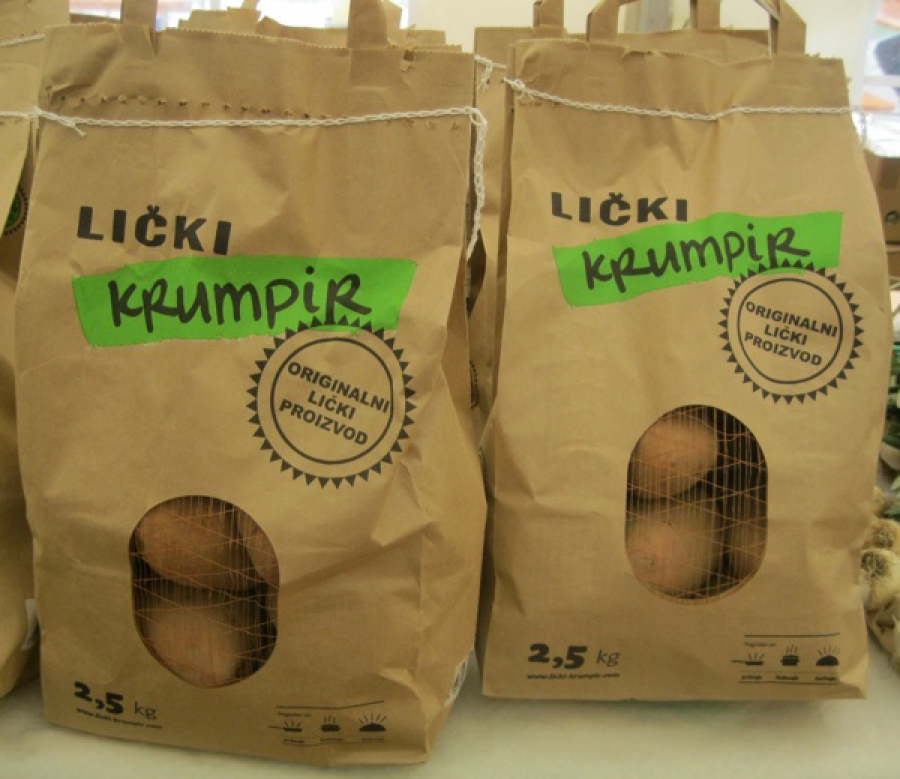 Lika Potatoes
Lika Potatoes
For the latest travel info, bookmark our main travel info article, which is updated daily.
Read the Croatian Travel Update in your language - now available in 24 languages
Rešetka's Superior Summer Street Food Brings Fine-Dining Quality at Coastal Pop-ups
July 13, 2020 - In their first venture to the Croatian coast, Rešetka's summer menu brings fine-dining quality to seaside streets in 2020
Sometimes you just want a burger, a sandwich, or something you can just eat from your hands. But, just because you haven't got the time or can't be bothered with the faff of fine dining, that doesn't mean you're volunteering for a drastic drop in quality.
That's where Rešetka comes in. Street food providers renowned for sourcing and selling only quality meats, the grill specialists have been a highlight of Zagreb Burger Fest and several pop-ups in recent times. This summer, the experience that has won over the Croatian capital's burger connoisseurs can be found instead along the coast.
Rešetka owner Nikola Božić has embarked on the summer venture with chef Katarina Vrenc. You'll be able to find their new concept 'Fine Street Food by Reshetka & Katarina Vrenc' at several pop-up locations along the Adriatic this summer. They'll be visiting Istria, Kvarner and Dalmatia, including the islands of Cres and Pag.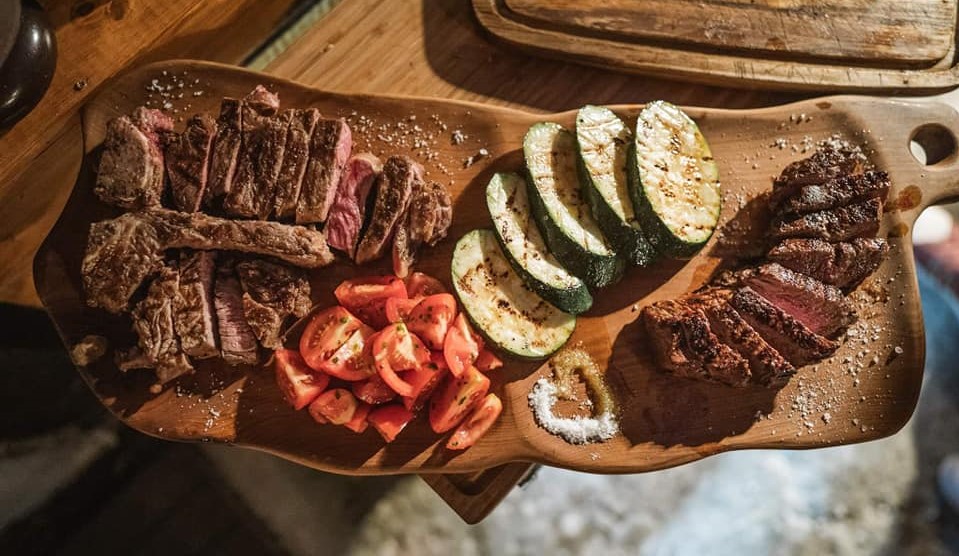
Rešetka and Đurina Hiža are renowned for using only high quality, locally sourced produce within their dishes including, this year, beef from a hybrid of Japan's famed wagyu and Holstein, sourced from the first range herd of its kind in Croatia © Rešetka
With a commitment to cooking only with high quality, locally sourced produce and ingredients, the team is known to use premium meats and seafood for their dishes. This year they will offer beef from a hybrid of Japan's famed wagyu and Holstein, sourced from the first range herd of its kind in Croatia. Within a summer menu that combines the best of continental and coastal Croatian ingredients, you'll also find superior snacks such as rich pork belly paired with octopus.
Nikola Božić is also the proprietor of Đurina Hiža near Varaždinske Toplice. As recently covered in TCN, thanks to some quick and positive thinking, though the restaurant closed for a while in the Coronavirus lockdown, Nikola was able to adapt his business in order to remain successful during the period; relying on high quality, locally sourced ingredients, he became a bridge between the small producers he'd spent time finding, and those shopping online from their homes. Their 'Deda Goes Around the World' service delivered meats and other produce throughout Croatia during the restaurant's temporary closure.
If you're planning to visit Dubrovnik, Biograd, Pula, Premantura or Split this summer and can't face another pizza slice, kebab or burger of questionable origin, be sure to look out for the Rešetka logo. Fine Street Food by Reshetka & Katarina Vrenc will visit Plavica Bar on island Cres on 7 & 8 August and the Michelin-starred Boškinac on Pag in the middle of September. Further inland, they'll also be available at the High Grounds Festival in Varaždinske Toplice on 31 July, 1 & 2 August. Grab yourself a handful of delicious food and pick a spot to watch the stunning Croatian sunset, the Adriatic coast and its breathtaking backdrop has long been lacking exactly this standard of street food to accompany.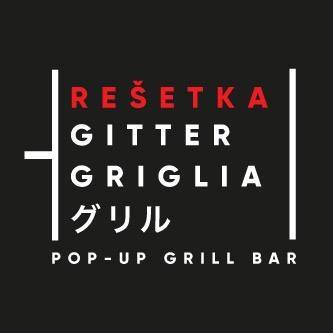
© Rešetka
Chef's Stage in Šibenik: Gastronomy Influences Perception of Destination
As Morski writes on the 18th of March, 2019, yesterday one of the most important gastronomic congresses in the Republic of Croatia - the Chefs' Stage, began. The gastronomic event has been taking place in the historic Dalmatian city of Šibenik from the 18th to the 19th of March, and has been attended by the State Secretary of the Ministry of Tourism, Frano Matušić.
This Šibenik-based gastro event, which brings together some of the greatest names of both the Croatian and the international gastro-scene, has created discussions on a number of issues related to gastronomy and the hospitality sector, with the aim of linking those who work in tourism, hoteliers, manufacturers, suppliers, influencers, and all other types of professionals within the industry, as well as all enthusiasts of a high quality gastronomic scene.
At the very beginning of Šibenik's Chefs' Stage, the importance of gastronomy for Croatian tourism was pointed out by the longtime Croatian Minister of Tourism, Gari Cappelli:
''As many as 93 percent of tourists take part in some kind of ''special experience of food and drink'' during their trip, suggesting that today, gastronomy is a piece of content that can significantly affect the perception of an entire destination and influence the level of satisfaction guests have with their overall tourist experience. Croatia is successfully building its image as a high quality gastronomic destination, which is best acknowledged by our recognition by the world renowned Michelin and Gault & Millau guides, and with further connectivity with local producers and building ''stories and experiences'' related to our eno-gastronomic products, Croatia can become one of the gastro icons of Europe,'' Capelli stated.
During the two day Chefs' Stage, there were numerous panel discussions, masterclasses with well-known chefs, and lectures on gastronomy with the beautiful backdrop of Šibenik adding to the ambience. Among other things, the panel related to the project of linking the food-processing sector and the tourism sector through the establishment of local production systems and the territorial branding of the Republic of Croatia as a recognisable gourmet destination. It is a project aimed at positioning Croatia as a gastro icon affirmed through local foods, authentic tastes, and diverse cultural heritage, and for that purpose an action plan for the development of gastro tourism will soon be presented.
The panel titled "What Croatia needs" was attended by Secretary of State Frano Matušić, who himself emphasised the fact that gastronomy is one of the foundations of the development of year-round tourism. He said that according to research by TOMAS Summer 2017, gastronomy was highlighted as one of the main motivators for the arrival of guests in Croatia. Namely, according to that piece of research, as many as 29 percent of respondents emphasised gastronomy as a motive for making Croatia their choice.
''A large contribution will be given by the Competence centre which will, through networking and cooperation with powerful foreign centres, contribute to strengthening the quality of education in the tourism and hospitality trade, which will ultimately affect the quality of our country's gastronomic offer,'' concluded Matušić.
The second edition of the largest gastronomic congress in this part of Europe - Chefs' Stage, brought 50 Croatian and 33 international chefs and other professionals together in Šibenik over a two day period, with products being presented by 70 Croatian producers and winemakers, along with the presence of representatives of various gastro-oriented international media.
Make sure to follow our dedicated lifestyle page for much more.
Are Mali Ston's Precious Oysters Now Norovirus Free?
We reported recently on the truly tragic situation that Ston's precious oysters had found themselves stuck in. In short, this famed gem of southern Dalmatian cuisine had fallen victim to Norovirus after septic tanks weren't being cleaned out properly, and the traditional Days of Mali Ston Oysters, which was due to be held on the 16th of this month, had to be cancelled for health and safety reasons.
While the news was indeed as sad as it was alarming, has a solution to Mali Ston's Norovirus problem been found?
As Morski writes on the 11th of March, 2019, there appears to no longer be any detected presence of the potentially deadly Norovirus in Mali Ston. This was confirmed to Dubrovacki list by dr. Sc. Eddy Listeš from the Veterinary Institute of Split.
The last tests on the matter were carried out last Friday, but unfortunately the paperwork confirming the absence of Norovirus from the area and its beloved oysters has not yet reached those to whom such a document of confirmation is of vital importance.
To briefly recall, back at the very beginning of March, discovered via the regular sampling of the seawater and shellfish (oyster) quality, the presence of Norovirus was established.
Norovirus, otherwise of human origin, is the cause of infections of the digestive system. Norovirus wreaks havoc in the human digestive system, causing violent diarrhoea, vomiting, the inability to hold any food or liquid down, often resulting in dehydration and the need for emergency hospital treatment, and sometimes even in death. It is transmitted from person to person, via the fecal-oral route, typically through food contaminated by the fecal matter of infected persons and contact with surfaces contaminated with Norovirus. Norovirus is highly contagious and its symptoms, which as described above are often severe, tend to manifest quickly.
Having the potentially massive health issues that could be caused by the consumption of Mali Ston oysters which have come into contact with Norovirus in mind, a decision was made by the organiser of the traditional Day of Mali Ston Oysters to cancel the beloved event, writes Dubrovacki list.
Vlado Onofri, a respected senior scientific advisor at the University of Dubrovnik said that septic tanks, which in themselves would not be problematic were the situaton involving just several family houses, were the cause of the Norovirus issue. The situation that has arisen in the Dubrovnik area as a whole is that there are now a lot of apartments and far too many people, without anyone properly dealing with the septic tanks and the dangerous bacteria and viruses that gather there.
"Septic tanks can't withstand that pressure and it (everything that builds up in them) has to come out somwhere. That's it. We've sh*t on ourselves,'' stated Onofri.
Make sure to follow our dedicated lifestyle page for more. If it's just Dubrovnik and southern Dalmatia you're interested in, give Total Dubrovnik a follow.
Traditional Croatian Recipes: Gregada
January 2, 2019 — Have you ever tried gregada? This humble fish stew was most likely brought to the region by Greek settlers circa 380 BCE, as gregada is said to be the oldest way of preparing fish in Dalmatia, though potatoes were introduced considerably later.
Gregada was long known as a staple among Dalmatian fishermen, and even though it is mostly associated with Hvar and other central Dalmatian islands, this traditional Croatian dish is nowadays prepared all along the Adriatic coast.
This recipe is really a no-brainer; all you need is some fresh white fish, a couple of potatoes and a few other ingredients. Gregada is traditionally flavored with garlic, celery, and parsley, whereas modern recipe variations often include even capers and salted anchovies.
In Croatia, gregada is typically made with rockfish like conger and/or grouper, but also the bottom-dwelling monkfish, and often the common pandora. If those are not available, as an alternative to Mediterranean fish, you can try using any other firm-fleshed white fish like barramundi, dorado, tilapia, etc.
Here is a simple variation of this classic Dalmatian recipe:
Ingredients
1500g fresh white fish, cleaned and scaled
500g potatoes, sliced
300g onions, sliced
300ml olive oil
500ml dry white wine
300ml water
3-4 garlic cloves, sliced
salt and pepper, to taste
bay leaf, parsley
Directions
Heat the oil in a large, shallow, heavy-bottom brazier pot and sauté the onions until tender and slightly translucent. Add garlic and potato slices; sauté for a few more minutes. Then, layer fish on top of potatoes, throw in a few bay leaves, and braise in just enough water and white wine to cover everything. Gregada should be done in about 20 minutes. Dobar tek!
Stay tuned for more delicious Croatian recipes by following TCN's gourmet page.
Traditional Croatian Recipes: Splitska Torta
December 9, 2018 — The famous Split cake is undoubtedly the pinnacle of Dalmatian pastry making, though today it is prepared all along the Adriatic coast. Splitska torta is made with layers of nut-fruit meringue and a simple egg yolk buttercream. With dried figs, almonds and raisins as key ingredients, this traditional recipe perfectly reflects the essence of the Mediterranean.
A true Dalmatian favorite, Splitska torta is prepared for all kinds of festive occasions, and in our family, it is also an essential part of a traditional Christmas spread.
You can find hundreds of different recipe variations online, but once you nail down the basic technique, you'll discover that Splitska torta is really simple to make, and the ingredient list can easily be tailored to anyone's liking.
For example, instead of using just almonds, I like to use a mix of almonds, hazelnuts, and cashews, but also macadamia and pine nuts, if available. And if you want to add some extra chewiness to the meringue layers, along with dried figs, try using dried apricots. My last recipe rendition included a mix of dried pineapple, papaya, and mango — nothing to do with Split nor the original recipe, but it was delicious nonetheless!
Here is the basic recipe for Splitska torta:
Meringue
9 egg whites
pinch of salt
9 tbsp crystal sugar
150g almonds
150g dried figs
150g raisins
3 tbsp all purpose flour
Cream
9 egg yolks
9 tbsp powdered sugar
250g unsalted butter
1 tsp vanilla extract
lemon or orange zest, if desired
1) Beat the egg whites until frothy and forming soft peaks. Then add a pinch of salt and start gradually adding sugar while mixing them until stiff, glossy peaks form.
Tips: Make sure you separate the eggs without leaving any trace of yolk in the whites as the fat in the yolk can prevent the whites from developing the desired volume. For a foolproof meringue, after the sugar, add a splash of acid like apple vinegar or lemon juice to the mixture, as this helps to form a stable foam and it also makes meringue crisp on the outside but soft and sticky on the inside.
2) Heat the oven to 180°C/356F. If available, use a food processor to coarsely chop almonds (and/or other nuts), dried figs and raisins. Add flour and mix well. Lastly, combine the nut, fruit and flour mixture with meringue. Spread in a finger-thick layer over a pan lined with parchment paper. Bake for about 15-20 minutes, until golden brown.
3) To make the cream, combine the egg yolks with powdered sugar and mix over a bain-marie until thick and frothy. Add a splash of vanilla extract and lemon or orange zest, if desired. Leave to chill. Meanwhile, soften the butter at room temperature, and then cream it until smooth and foamy. Combine creamed butter and chilled egg yolks; mix well.
4) Once the meringue is baked, allow it to cool completely before cutting and/or transferring it. When ready, cut the meringue in 3 equally sized strips. To assemble the cake, spread about 1/4 of cream on top of each strip and gently stack them on top of each other. Use the remaining cream to cover the sides. Put in the fridge and leave to set. Decorate as desired.
Tips: Soften the butter just enough that your finger easily leaves a dent when you press it. Adding 1-2 tablespoons of granulated sugar will help cream the butter faster and form a uniform texture.
For more delicious recipes, make sure you follow TCN's dedicated gourmet page.
11th Fig Festival to be Held in Zadar This Month
September in Zadar is always worth experiencing, especially if you happen to be a fan of figs...


